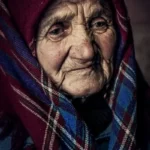Introduction
In sociological discourse, the concept of a “minority group” holds significant analytical weight. Contrary to the common-sense understanding that equates minority status purely with numerical inferiority, sociologists define minority groups primarily in terms of power relations and systemic marginalization. These groups may or may not be numerically smaller but are distinguished by their subordinate position in a social hierarchy, manifesting in persistent patterns of disadvantage and social exclusion.
This article explores the sociological foundations of the term “minority group,” its defining characteristics, typologies, sociohistorical context, and implications for social policy and inclusion. Drawing on key concepts in sociology such as social stratification, institutional discrimination, and intersectionality, this article aims to equip undergraduate students with a comprehensive understanding of the social dynamics that shape minority group experiences.
Defining Minority Groups
Power, Not Numbers
A fundamental sociological principle is that a minority group is defined not by the number of its members but by its relative lack of power, privilege, and access to resources in comparison to the dominant group. Louis Wirth, a prominent sociologist, described minority groups as those who are “singled out for unequal treatment” and who regard themselves as objects of collective discrimination.
This definition underscores the centrality of structural power dynamics in shaping group status. For instance, women may constitute half or more of a given population but still be considered a minority group because of their historical exclusion from power, leadership, and economic capital.
Dominant and Subordinate Groups
Sociologists distinguish between dominant and subordinate groups in order to highlight asymmetrical relations of power:
- Dominant Group: Possesses greater power, social status, and access to resources. It sets the norms and standards by which other groups are judged and often controls key institutions such as media, law, and education.
- Minority (Subordinate) Group: Experiences systemic barriers to equal participation in societal institutions and is often subject to both overt and covert discrimination. Subordinate groups may internalize their marginalization, resulting in lower self-esteem and reduced social mobility.
By focusing on social, political, and economic power rather than simple demographics, the sociological approach reveals the mechanisms that perpetuate inequality.
Characteristics of Minority Groups
Minority groups tend to share a set of defining characteristics that distinguish them sociologically. These features help operationalize the concept for empirical study and policy analysis:
- Unequal Treatment: Members suffer social, economic, and political disadvantages. This inequality can manifest in areas such as employment, education, housing, and criminal justice.
- Distinguishing Physical or Cultural Traits: These may include skin color, language, religious practices, dress, or national origin. Such traits are often used to justify differential treatment.
- Involuntary Membership: Group membership is typically ascribed at birth, not chosen. This involuntariness reinforces structural constraints.
- Group Solidarity: There is a shared sense of identity and common fate among members. Solidarity may arise from shared cultural practices or collective experiences of oppression.
- Marital Endogamy: Members of minority groups often marry within their group, either by cultural tradition or because of social/legal pressures that restrict exogamy.
These criteria allow sociologists to identify minority groups across time and place, recognizing patterns of exclusion that are structurally reproduced.
Types of Minority Groups
Understanding the diversity of minority experiences requires categorizing the different types of minority groups. Though these categories often intersect, they provide conceptual clarity and analytical utility:
Racial and Ethnic Minorities
- Racial Minority Groups: Classified based on socially constructed perceptions of biological differences, particularly skin color and facial features. Examples include African Americans, Indigenous peoples, and Dalits in India.
- Ethnic Minority Groups: Defined by shared cultural characteristics such as language, religion, ancestry, and customs. Examples include Irish Americans, Armenians, and the Rohingya.
These categories often overlap, but the distinction is important for understanding how race and ethnicity are used in different sociopolitical contexts to categorize people.
Religious Minorities
Religious minorities are groups whose faith traditions diverge from those of the majority population. They often face cultural stigmatization, legal discrimination, or outright persecution. Examples include:
- Muslims in secular or predominantly Christian countries
- Christians in Muslim-majority nations
- Jews in predominantly non-Jewish contexts
The treatment of religious minorities often reflects broader issues of nationalism, cultural homogeneity, and secularism.
Gender and Sexual Minorities
- Gender Minorities: These include individuals who do not conform to the gender binary, such as transgender, non-binary, and genderqueer people. They face social stigma, violence, and institutional exclusion.
- Sexual Minorities: People whose sexual orientation differs from the heterosexual norm. This includes lesbian, gay, bisexual, pansexual, and asexual individuals. They often experience both cultural marginalization and legal discrimination.
These groups highlight the socially constructed nature of gender and sexuality and the ways in which norms about these constructs are enforced.
Age-Based Minorities
Children and older adults are frequently marginalized due to their perceived dependency, limited autonomy, and lack of economic productivity. Ageism affects access to healthcare, employment, and political representation. Youth may be criminalized in educational settings, while elderly populations may be neglected in healthcare systems.
Disability Groups
Persons with disabilities represent a structurally disadvantaged population. Disabilities may be physical, cognitive, sensory, or psychological. These individuals often encounter:
- Inaccessible infrastructure
- Stigmatizing social attitudes
- Underemployment or unemployment
Disability is increasingly viewed through the social model, which emphasizes societal barriers over individual impairments.
The Social Construction of Minority Status
This rest of this article is only available to members. Join now for full access to all premium articles.
View Plans & Subscribe Already a member? Log in.














